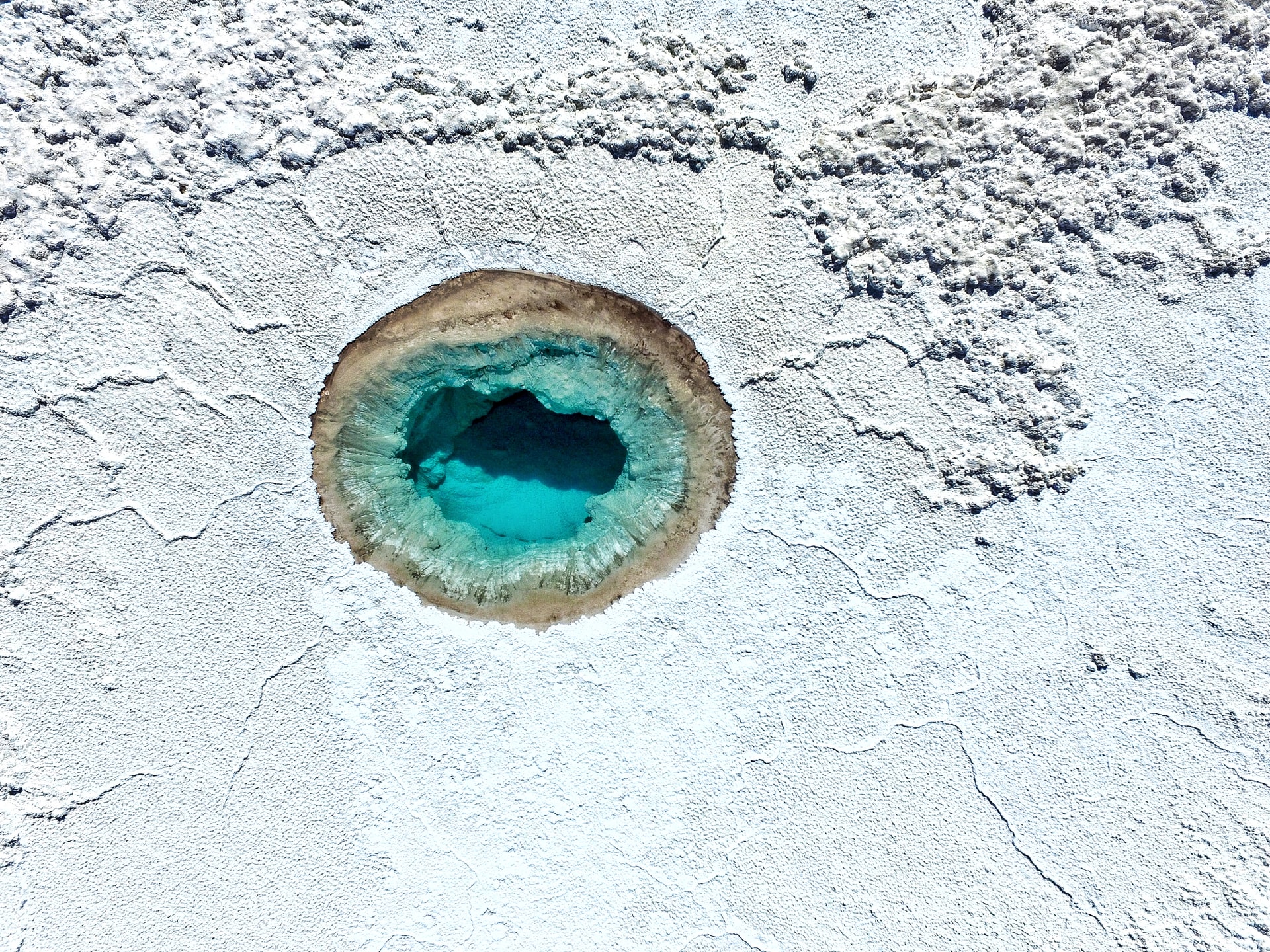Cesano is a small town located in the volcanic region of the Sibillini mountains, near Rome. In 1975 Enel discovered a geothermal fluid in the roots of this land that is particularly interesting for two characteristics: high temperature (therefore useful to produce energy) and high salinity rate with the presence of lithium. “Fluids like these have never been exploited because historically geothermal energy has always been seen only as a source of energy,” Andrea Dini, CNR researcher and expert in mineral deposits, explains to Renewable Matter. “Geothermal plants where the water was very rich in salts were generally discarded because the high salinity gave problems to the plants and the separation systems.” Because of the impossibility of exploiting geothermal energy, Enel then decided to quit, leaving the Cesano deposit unused.
After almost 50 years of absence of research in the field, the Lazio Region has now officially authorized the Australian company Vulcan to carry out the first phase of studies that will detect the presence of lithium in the area of Cesano, a few kilometers from Lake Bracciano. "After the environmental impact assessment carried out by the Lazio Region, Vulcan will have 6 months to carry out the surveys", says Daniele Torquati, president of the Municipality of Rome XV, interviewed by Renewable Matter. "After these 6 months they will inquire whether or not to proceed with lithium extraction. These will be mostly soil surveys without any particularly invasive operations."
With its ambitious “Zero Carbon Lithium” project, the company Vulcan Energy Resources had already obtained five new mineral exploration licenses in the Upper Rhine Valley, in Germany. Through geothermal lithium mining, Vulcan intends to zero the carbon footprint of producing the lithium-ion batteries needed for electric vehicles and energy storage. Partners include major automotive electric brands such as Volkswagen, Renault and Stellantis, which has signed an agreement to supply lithium hydroxide – between 81,000 and 99,000 tons – starting in 2026.
Is geothermal lithium more sustainable?
According to a study by the U.S. Geological Survey, the global lithium reserve is estimated at 86 million tons. “Although current resources far exceed projected demand – lithium mining will need to increase 10-fold over the next decade for targets set by 2050 – momentary tensions could arise, related to local difficulties in mining operations,” reads a scientific article in Nature. In particular, growing environmental concerns and worker exploitation challenges could affect future production.
Thus, we posed the question of whether geothermal lithium mining could really be a more sustainable solution than traditional mining methods.
The European Geothermal Energy Council (EGEC) has explored this issue, arguing that a single geothermal energy plant can produce electricity, heating, cooling and large amounts of lithium in a carbon-neutral process. In geothermal plants, lithium-rich frost is pumped to the surface directly from geothermal wells. The heat carried by the frost is then used to produce renewable energy, while the frost, net of lithium, is re-injected into the well. “The process of separation between lithium and frost is done through electrolytic cells that certainly have less impact than traditional metallurgical processes,” explains Andrea Dini. “However, even just drilling exploratory wells is not zero impact. It's also not trivial to get energy from that brine, which doesn't exactly get along well with geothermal turbines, although there are very advanced technologies today.”
The environmental impact of traditional extraction methods
The primary lithium resources currently exploited are found 26% in hard rocks (granites, aplites and pegmatites) and 58% in closed basin salt flats, the so-called Salar: those salt deserts of the Chilean, Bolivian and Argentine Andes where water from underground salt lakes (brine) is pumped to the surface and evaporated in large tanks. After the evaporation phase, the resulting salt solution is processed further until the lithium is ready to be used. “All the water that accumulates these lakes from the shallow evaporates rapidly,” adds Andrea Dini. “And because of the high salinity, very boron- and lithium-rich sediments are deposited.”
In Chile alone, more than 455 billion liters of water have already evaporated, but the prospect is as high as 1,500 billion liters just for the Atacama Salar, which has become one of the driest places in the world. In addition to environmental costs, social costs are also high. Sonya Ramo, an indigenous leader and activist from Chile, and other activists walked 350 kilometers through the desert to the city of Antofagasta to ask authorities not to further expand mining.
“According to my personal experience,” comments Dini, “there is clearly an impact in the Salar, especially in one of the most beautiful areas of the world. But it also depends on who you're talking to. Many Chileans from the local populations working in the Salar are instead in favor of the deposits. The Peruvian government has forced some companies to invest part of the profit in infrastructure projects in villages that don't even have electricity.”
In Chile, too, part of the profit of Sqm and Albemarle – among the largest lithium producers in the world – goes back to Santiago in the form of taxes that should be invested to improve the local infrastructure. But according to environmental groups and indigenous people, the problem is not solved by a fair sharing of profits, it is the fragile ecosystem of the Atacama Desert to be in danger.
In Serbia, meanwhile, environmental associations and local populations have blocked the lithium mine project in Loznica. The multinational Rio Tinto would not have provided sufficient environmental guarantees to the government of Prime Minister Ana Brnabić and the residents of the area. The 2.4 billion euro deposit could cover 10% of world demand. “40% of lithium production still comes from the mines of granite-type rocks that contain lithium minerals,” Dini explains. “These are rocks that are generated at high temperatures, very hard. After the rock is crushed there are various metallurgical processes that allow lithium to be extracted.”
Geothermal Lithium in Europe and the United States
By 2025, Vulcan Energy plans to extract 40 thousand tons of geothermal lithium hydroxide from the Rhine Valley in Germany, enough to provide batteries for the equivalent of about one million cars a year. But it's not the only country that can harness the hoarfrost its land has to offer. “There are sites in France and England as well, but these fluids have a lower amount of lithium and low temperature, which nevertheless makes them easier to handle,” Dini explains.
Cornwall in particular has come under the magnifying glass for geothermal lithium extraction. Geothermal Engineering Ltd, a company based near Redruth, Cornwall, that specializes in developing and managing geothermal projects, is working on a pilot project focused on extracting lithium from geothermal water.
According to the U.S. Department of National Renewable Energy Laboratory, the technologies behind direct lithium extraction (DLE), i.e., the separation of lithium and brine, can be grouped into three main categories: absorption using porous materials that allow lithium binding, ion exchange, and solvent extraction. While there is enthusiasm for its potential, NREL cautions that it will be a challenging task to scale up production through these methods.
GEL, in addition to Vulcan, is one of several companies that are investing heavily in extraction from geothermal fluids. In the United States, a company called Controlled Thermal Resources has announced the start of its drilling program at the Hell's Kitchen Lithium and Power project in California.
Italy has great potential in this regard as well, and not just in Cesano. “The whole area from northern Lazio to Campania (Vesuvius area) is a potentially good area to extract geothermal lithium,” Dini explains. Maybe it won't cover all of Italy's needs, but a more circular approach can take care of that, capable – also thanks to better design – of regenerating the precious lithium-ion batteries.
Image: Salar de Atacama, ph Benjamin Gremler (Unsplash)



